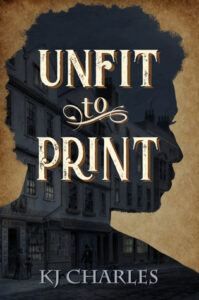Posted July 12, 2020 by Nicky in Reviews / 6 Comments
 The A.I. Who Loved Me, Alyssa Cole
The A.I. Who Loved Me, Alyssa Cole
Trinity Jordan is recovering from an accident she can’t wholly remember, traumatised and struggling to get back on her feet, despite her physical recovery. She’s thrown out of her usual, comfortable(ish) routine when she meets Li Wei, the nephew of the scientist who lives in the same building. He is, Dr Zhang says, recovering from a terrible accident of his own, and relearning almost everything. There’s something powerfully attractive about Li Wei, for Trinity, and she’d almost forgotten what that’s like; they find themselves drawn together, even before Dr Zhang suffers a stroke and begs Trinity to take care of Li Wei.
The thing is, Li Wei is an AI in a synthetic biological body, learning to express himself and unlock his past memories — and his progress accelerates around Trinity, who is still powerfully drawn to him when she discovers the truth. The problem is that he’s beginning to pick at the inconsistencies in her life: why does she say she frequently leaves the area, when he’s never known her to do so? Why does she describe a childhood memory and then immediately forget it?
I wasn’t quite expecting the turn the story took, from the description, but it was definitely an interesting way to twist the expectations from the cover and description. There’s more sci-fi lurking under the hood than I’d expected, though it builds up toward that point pretty well.
Apparently this was originally written for Audible and recorded with a full cast, which I think might be a better way to experience it (or at least some of the dialogue-heavy sections). If you’re looking for a sci-fi romance to listen to, it sounds like it’d be fun — and the story itself is definitely fun. I didn’t expect to find myself reading non-stop for just over an hour to read it in one go, but whomp! It happened.
Rating: 4/5
Tags: Alyssa Cole, book reviews, books, mystery, romance, SF/F
Posted July 10, 2020 by Nicky in Reviews / 0 Comments
 The Murder of a Quack, George Bellairs
The Murder of a Quack, George Bellairs
The Murder of a Quack is another murder mystery in much the same vein as Bellairs’ others: for all that Inspector Littlejohn is chasing murderers, there’s something gentle about the whole thing. I suppose it’s the tenderness and affection with which Bellairs draws some of the characters, even as he makes them funny. The feud between the two oldest men in the village, the village bobby and his squeaky shoes, the foibles of the postmistress and her love of France and all things French… There are some more ugly characters, of course, but even those show glimmers of humanity.
In this particular instalment, Scotland Yard in the shape of Inspector Littlejohn is called in to investigate the death of a local bonesetter, highly respected by most of his community, though hated by the local properly qualified doctor for being trusted and preferred when it comes to minor ailments by most of the villagers. Though he’s a “quack”, that mostly refers to his lack of official qualifications: the story makes it very clear he was an experienced and careful healer, and worthy of trust. Littlejohn has to really poke around to get hold of the murderer in this case, but once he finds the right thread and gives it a good pull, his conscientious work pays off, as always.
Littlejohn isn’t a flashy detective, but that makes him the more enjoyable in a quiet, methodical way. Bellairs’ books lack the drama of some of the other Golden Age writers, but I think more highly of his warmth and ability to draw characters with each book. And this one even made me laugh a few times!
Rating: 4/5
Tags: book reviews, books, British Library Crime Classics, crime, George Bellairs, mystery
Posted July 9, 2020 by Nicky in Reviews / 0 Comments
 The Dead Shall Be Raised, George Bellairs
The Dead Shall Be Raised, George Bellairs
George Bellairs is one of the writers in the British Library Crime Classics series who is reliably entertaining: perhaps not the literary heights of Sayers’ best, or the memorable twists of Christie’s work, but solid and enjoyable, rooted in places and people that feel familiar. It’s well-worn without being tired; the literary equivalent of a duvet day.
This particular mystery features the discovery, over the Christmas season, of the body of a murdered man… a man who was himself suspected of being a murderer twenty years before. Obviously his discovery — just metres from where they found the body of the man he was alleged to have killed — sheds new light on the old mystery, and requires that murder too to be investigated again. Inspector Littlejohn is just spending Christmas away from his usual beat, but he agrees to help investigate, being a Scotland Yard man.
Through patient work and a little insight into human nature, and his willingness to depend on local knowledge rather than think himself above, he… well, it’s a Golden Age mystery, so you won’t be surprised to know that the killer is found, and all is made comfortable again. The killer became obvious to me fairly quickly, and the twist in the tale as well, but I enjoyed the journey nonetheless. Bellairs may not be a particularly fine prose stylist, but he evokes the village and the people within it beautifully. Mrs Myles is rather good, and the Inspector Emeritus as well. Not stunningly original, perhaps, but there’s enough of their speech patterns and gestures and thoughts that they feel just real enough.
Definitely a worthwhile one.
(The Murder of a Quack is a separate book, unrelated apart from the shared detective, so I’ll review that later, separately, even though it’s reissued in the same volume.)
Rating: 4/5
Tags: book reviews, books, British Library Crime Classics, crime, George Bellairs, mystery
Posted July 7, 2020 by Nicky in Reviews / 2 Comments
 Of Dragons, Feasts and Murders, Aliette de Bodard
Of Dragons, Feasts and Murders, Aliette de Bodard
Received to review via Netgalley; release date 7th July 2020
Of Dragons, Feasts and Murders is set in Aliette de Bodard’s Dominion of the Fallen universe, but it’s really apart from the main plot (at least as far as the first two books go — I haven’t read the third, yet). It’s a standalone, so you don’t need to have read the series, but it may enhance things a little bit and crack open the motivations of the main characters a little more. It follows Thuan and Asmodeus, rulers of Hawthorn House, on a visit to Thuan’s family — a dragon court in a Vietnamese style, rather than the post-apocalyptic Paris that the main series focuses on. Thuan is a bookish sweetie; Asmodeus is a sadistic murderer. They love each other very much. Do they trust each other? Rather less.
It’s a rather fascinating pairing, as it happens: they have very different outlooks, and different motivations — their interests and their aims don’t always align. It makes for an interesting tension between the two and within the story, which involves a murder at court which Thuan must unravel, to prevent his dynasty from being unseated from the throne.
I found it all really enjoyable, particularly in the exploration of the balance and tension between them. For me, as someone who has read part of the main series, it’s also an opportunity to see a bit more of the world, but I don’t think that’s a requirement. The traditional mystery of the dead body itself isn’t much of one, really; the question is not so much whodunnit, or even howdunnit or whydunnit, but a question of how Thuan will use it to unpick the greater issue of the attack on his family.
And let’s face it, there are just some really great lines. I love Asmodeus as a “sweet, murderous delight”, in particular.
Rating: 4/5
Tags: Aliette de Bodard, book reviews, books, mystery, queer fiction, SF/F
Posted July 5, 2020 by Nicky in Reviews / 0 Comments
 Annabel Scheme, Robin Sloan
Annabel Scheme, Robin Sloan
I’ve started trying out Storygraph, and one of the main features that drew me in was the ability to search for a book recommendation based on various inputs: not just genre, but pace, mood and length as well. So I thought I’d give it a try and buy one of the books it recommended — and thus, Annabel Scheme, “perfect for people who like Sherlock Holmes, Douglas Adams, ghosts and/or the internet”.
Annabel Scheme is a detective in a cyberpunk/horror landscape, with all kinds of weird and wonderful details. Hu is her assistant, an ex-Grail (think Google) server that just really wants to help and be a good sidekick. The story opens with a client, as this sort of story has to: a man wants to know what the heck is happening when new tracks of himself and his dead girlfriend are suddenly appearing across the internet, and he thinks Annabel Scheme can answer.
That mystery itself gets wrapped up very quickly, and obviously reveals itself as a portal into a larger story, which was… a little too tenuously connected, for my taste. It felt like the story fell into parts, and that was just a bit too much of a separate story.
Overall, though, it’s pretty entertaining: the Holmesian pastiche is there, but it’s not too much of a copy/paste of Holmes canon, style of character; though I can see what the comparison to Douglas Adams is there for, that’s not really the vibe I got. Ghosts, well, there are kind of some ghosts, but I didn’t really feel that was the key thing… In the end, the more I think about it the more it crumbles, I’m finding: there are loose ends and things that I didn’t quite get — but it was a fun enough read for the less-than-an-hour I spent on it. Score one for Storygraph.
Rating: 3/5
Tags: book reviews, books, mystery, SF/F
Posted June 22, 2020 by Nicky in Reviews / 3 Comments
 Murder in the Mill-Race, E.C.R. Lorac
Murder in the Mill-Race, E.C.R. Lorac
Lorac starts this book by setting the scene, with a young doctor and his wife moving to an idyllic little village on the moor, self-contained and insular. They’re quickly accepted because of the doctor’s skills, of course, but there’s a little friction with a staple of the place: Sister Monica, a rather severe woman who rules over a little children’s home with an iron fist. Everyone says she’s “wonderful”, and yet there’s something forced about the superlative.
Since it’s a Golden Age crime novel, no surprises that Sister Monica is the one found dead, and that it unravels a whole snarl of issues in the little village. Lorac’s series detective, Macdonald, comes in to take a look — understanding the ways of a small village, but not bound by then, and able to cut some of the knots with plain-speaking and an inability to be rattled.
As always, Lorac is great with a sense of atmosphere: you can practically hear the sounds of the village, smell the scrubbed barren children’s home, feel the spray of the water in the mill race. The killer was the person I guessed, but Lorac avoided tying things up in too neat a bow: there are a couple of questions unresolved, and there’s no “sit all the culprits together in a room” moment. You do get a sense for how her detective works and how she likes to shape a mystery, after reading a few of her books — there are commonalities between this and her other books that felt a bit fresher the first time you read them.
Overall, though, Lorac’s ability to portray a place and a bunch of complicated characters remains a big draw, and I think her books are among the finer ones in the British Library Crime Classics collection (contrast Bude, for example, who I find entertaining but unremarkable as far as style goes).
Rating: 4/5
Tags: book reviews, books, British Library Crime Classics, crime, mystery
Posted June 19, 2020 by Nicky in Reviews / 0 Comments
 The Sussex Downs Murder, John Bude
The Sussex Downs Murder, John Bude
The Sussex Downs Murder is the third book I’ve read by John Bude from the British Library Crime Classics series, featuring the same detective as the previous two. Meredith is a policeman, and much of the story involves careful police work: cross-checking, putting a man on this and a man on that, and slowly amassing more evidence — so much that at first it’s hard to sort out what’s relevant and what isn’t, and which of the herrings are a suspiciously ruddy colour.
Bude’s writing is like that: methodical, thorough, a little slow, but ultimately assembling a pretty fascinating picture, with some nice set-pieces along the way. I don’t visualise things easily, but Bude brought to life the chalky cliff and the grassy downs of the setting, as his characters walk through them — a sketch, perhaps, but one that suggests just enough to contextualise what the artist wants to show.
I’ll admit that I find John Bude’s plots a trifle obvious, though Martin Edwards’ introductions don’t always help with that. He dropped a clue that raised my eyebrow right at the start, so I figured out where we were going. Still, I didn’t know quite how we’d get there, and with Golden Age crime fiction that’s usually the main thing.
In all, it’s a solid story, I didn’t spot any major holes, and it has its moments for characterisation, setting and humour. Not perhaps the best of the series, but an enjoyable specimen of the species.
Rating: 3/5
Tags: book reviews, books, British Library Crime Classics, crime, mystery
Posted June 16, 2020 by Nicky in Reviews / 0 Comments
 Think of England, K.J. Charles
Think of England, K.J. Charles
I knew what I was getting into with a K.J. Charles story, of course. Men being stupid at each other, probably a bodycount, good snark and a handful of sex scenes. That makes it sound formulaic, but it really isn’t — with each new story you’re meeting new and distinct characters, with their own reasons for taking their time or falling right into bed. In this book, we meet Archie Curtis and Daniel da Silva: one an ex-military man, still healing from wounds from a terrible accident, and the other an effete poet.
Both of them have been invited to a country house, and they each have ulterior motives for being there. Despite early tension between them, Curtis finds himself learning to appreciate Daniel better — and of course, their tension morphs into something else. I found myself going from wanting to throw things at Daniel to totally appreciating the developing relationship and wanting Curtis to be better at all this! That said, it isn’t really fair: Curtis is always decent, and though he might have some stupid stereotypes in his mind, he’s also open to learning better. I do wish we got a little more of Daniel’s point of view and how he sees Curtis, though…
There are also some very fun side characters, and I’m excited to meet them in Proper English. So glad I have it on my shelf… but on the other hand, I might save it for when I need a pick-me-up! K.J. Charles’ books are always perfect for my fidgety moods when I’m not sure what I want to read: fun stories, interesting characters, and yes, sparks always fly — and the chemistry is always great.
Rating: 4/5
Tags: book reviews, books, K.J. Charles, mystery, romance
Posted May 30, 2020 by Nicky in Reviews / 2 Comments
 The Colour of Murder, Julian Symons
The Colour of Murder, Julian Symons
This British Library Crime Classic is from later in the development of the genre than some others, with half the book consisting of the rambling story a man tells to a psychologist after being accused of a murder he can’t remember committing. It’s powerfully cringy, as you can see the narrator deluding himself, and pitiful too, because he’s half-aware of himself, and there’s (as someone later remarks) a sort of innocence about him. He seems to have ended up where he is by accident, and without quite understanding, and his mind seems to be gently unravelling… even though now and then he shows insight.
As a piece of writing, it’s excellent; it makes for discomforting reading.
The latter half of the book pulls back, finally admitting just who has been killed (it was one of the two characters I would’ve predicted), and showing the preparations for the trial (and finally the trial itself). This bit is more of a sketch, lingering on details here and there… but mostly just wrapping up the story implied by the opening narrative, which I found a lot stronger.
The ending is sort of predictable once you’ve seen all those details. It makes sense that the story needs wrapping up — you can’t leave that narrative on its own — and yet it all rather weakens and cheapens the effect. A bit of a mixed one for me, now I think about it in that light. Definitely worth a read if you’re interested in the Crime Classics series, though; this is definitely a stand-out for that narrative voice.
Rating: 3/5
Tags: book reviews, books, British Library Crime Classics, crime, mystery
Posted May 23, 2020 by Nicky in Reviews / 0 Comments
 Unfit to Print, K.J. Charles
Unfit to Print, K.J. Charles
I was feeling fidgety, so I decided to read for a book by K.J. Charles I hadn’t read yet. Unfit to Print is a standalone, following Gil Lawless and Vikram Pandey, the owner of a dirty bookshop and a high-flying lawyer, respectively. They knew one another at school, but have been separated for quite a long time, with Vik believing Gil to be dead. He’s looking for the son of a local Indian family, though, and that takes him to the street where Gil keeps his bookshop… and there they run into one another again.
Gil’s been hurt a lot and is as prickly as a hedgehog, while Vik’s not been interested in anyone since Gil’s disappearance from their boarding school. They quickly fall into their old intimacies, though Gil finds it hard to offer anything other than the physical and Vik finds it hard to take the physical aspect without the feelings getting in the way. At the same time, Gil needs to help Vik find out what happened to the boy he’s looking for, while trying not to get his reputation all smeared up for him…
It’s a lovely little second chance, and I quickly fell for both characters and their silly desperate attempts not to get hurt more when they’re already stumbling along with plenty of hurt to spare from their pasts. Their interaction smoulders as usual — holding hands was never so sexy — and it was a really fun read overall. The mystery aspect was a little bit perfunctory; it felt a bit of a letdown for the answer to be that easy, but it did make sense as well.
All in all, plenty of fun, though not for all the family!
Rating: 4/5
Tags: book reviews, books, crime, K.J. Charles, mystery, queer fic, romance
 The A.I. Who Loved Me, Alyssa Cole
The A.I. Who Loved Me, Alyssa Cole







